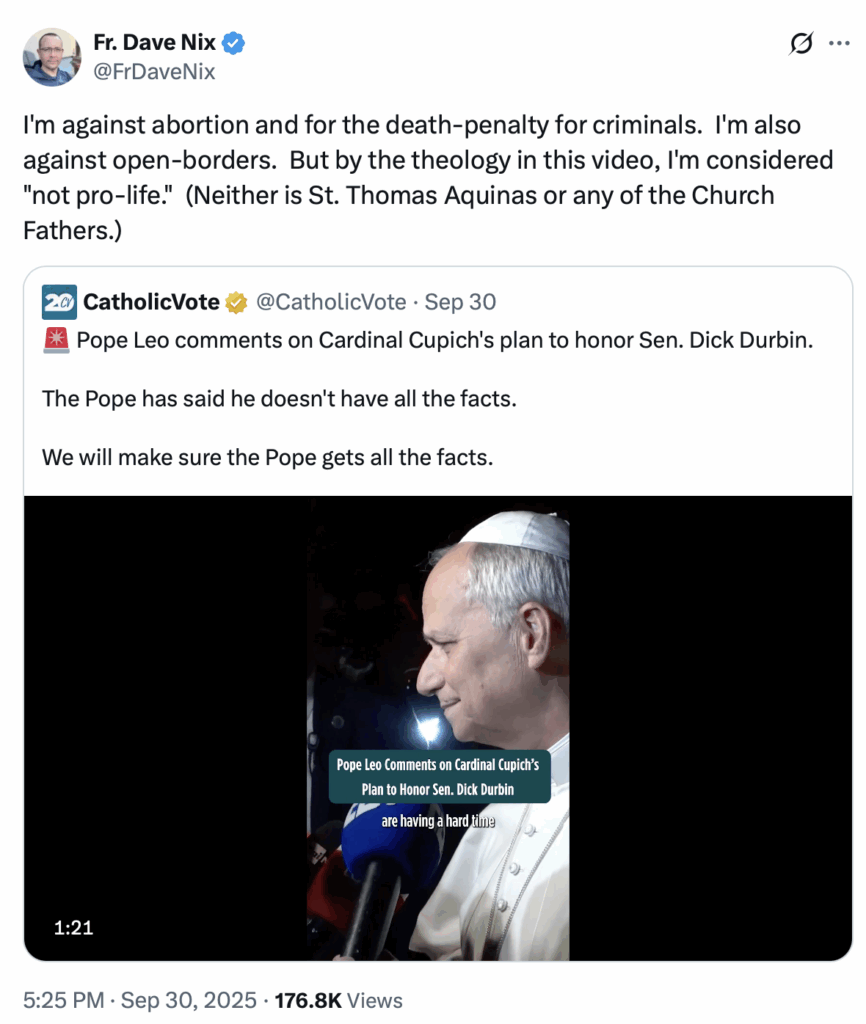When I was a student attending a liberal Jesuit high school, I was very much against the death penalty. I even wrote letters for Amnesty International (before they had taken their pro-abortion stance) with my friends in Denver cafes at night, while other guys were out partying. Back in the early 1990s when I was in high school, I also knew of the book Dead Man Walking about an anti-death penalty sister who spent time on death row named Sr. Helen Prejean.
Fast forward to the late 1990s where I am studying theology at Boston College, the second most prestigious Catholic University on the East Coast (second only to Georgetown.) I graduated from Boston College in 2000 as pre-med but with a degree in theology. Of course, both Georgetown and Boston College have lost the faith completely, but I didn’t know it at the time because I still found a few good teachers, like Dr. Peter Kreeft PhD.
Regarding classes with Dr. Kreeft, I still look fondly on my time learning under him. He is kind and brilliant. Even to this day, I say Kreeft is a much better philosopher than a theologian. But Dr. Peter Kreeft is no traditionalist. He has some serious errors in his theology. I say this not to rip on him, for he is a very good man, but just to show I am not about to quote a rad-trad, like me, on this topic of the death penalty.
So, I was in his class the day after he went to the movie called Dead Man Walking. Although the book came out years prior, it was made a movie in 1995 when I was studying theology at Boston College under Dr. Kreeft. (This is back before the scamdemic when people still went to movie theaters.)
Dr. Kreeft walked into our theology class back in 1995 and he said something like: “That was the most pro-death penalty movie I have ever seen!” We were all shocked. That movie, Dead Man Walking had been made to show how horrible the death penalty is, not to convince people to support it. How then could Dr. Kreeft (admittedly a big fan of JPII) claim the movie argued for (not against) the death penalty as the author had intended?
I don’t remember his exact words that followed, but basically Dr. Kreeft explained that when he saw the repentance and confession of the criminal on death row in the movie (played by Sean Penn) Kreeft realized that an impending death penalty looming over one’s head usually leads a convict to immediate penitence.
Fast forward to 2012. Now I am a new priest (still barely doing the TLM) and I am doing ministry at Colorado’s most high security prison. It is found in Sterling, CO. (Sterling holds Colorado’s most serious rapists and killers where the Supermax in Florence holds the most serious federal criminals.) In any case, I once went up to see the solitary confinement cells where there were still a few men on death row. (Colorado abolished the death penalty in 2020, eight years after my tour of death row.)
What I saw in Sterling prison was something I will never forget: The men in solitary were taken out of their normal dark cells for one hour a day. They were brought to a barely-sunlit cell (with a skylight perhaps 2 feet x 2 feet) where they could walk around. That day, I saw a man walking around like a tiger in a cage. He got one hour in that cell, the same size as his other cell, but with a touch of light. And after that? He was taken back to his dark cell for 23 hours.
The guard then told me about the men in solitary confinement. He said they often end up catatonic. The guard explained to me how they recently had to pull a man out of his cell with long hair and long nails because he had lost his mind in there. They had to do his basic hygiene—something the angry guards obviously despised.
Notice here that the point is that the murderers in solitary confinement lose their minds, making it impossible for them to ever repent of their sins. This is true, whether they kill themselves or they grow old in the dark cell having no brain cells functioning any more. Thus, they almost always go to God unable to repent because the state has caused them to lose their mind. Again, this is even more true since Gov. Polis abolished the death penalty in 2020.
St. Joseph Cafasso was a 19th century priest. He was known as “the saint of the gallows.” Like all the saints, (including St. Therese) he had no opposition to the death penalty. In fact, he saw the death penalty as I described above: An opportunity to repent… and fast! St. Cafasso heard many confessions before they were hung. Nearly all of them repented and confessed when faced with an impending death. It’s exactly as Dr. Peter Kreeft observed in the movie Dead Man Walking: The death penalty helps save the soul of someone otherwise-headed to hell.
Thus, mercy to society at-large is also mercy to the criminal when you use a traditional Catholic moral theology and soteriology (the study of salvation.) You see, when you do not believe most men and women go to heaven (as most US bishops believe) then you understand why mercy and justice truly meet in the death penalty.
Besides the fact that the Bible and the Magisterium and all the saints and 250+ Popes all approved of the death penalty, it is also the most merciful thing to do to the penitent. It gives him a chance to repent. This is something that I saw first hand in Sterling on death-row. It’s something St. Joseph Cafasso saw every day at the gallows. It’s even something the author and makers of Dead Man Walking ironically portrayed in their anti-death penalty book and movie.
Thank you if you’re able to donate.

